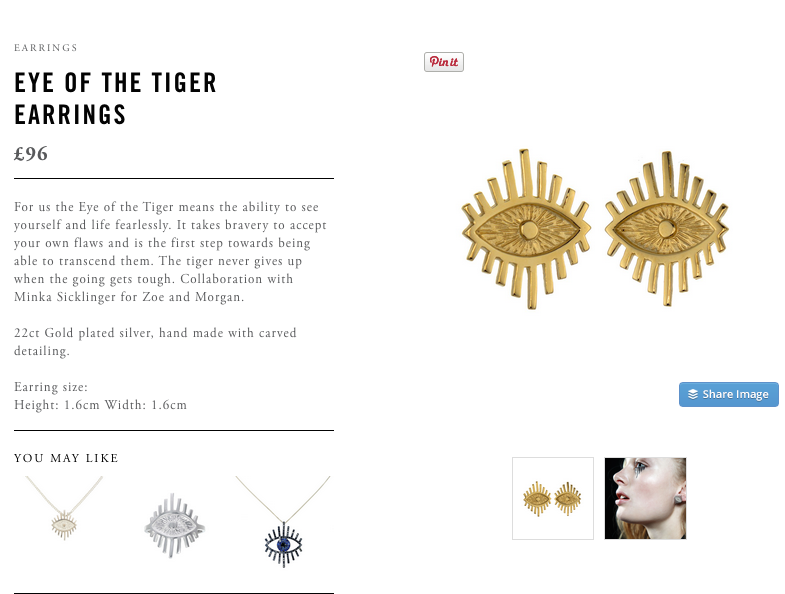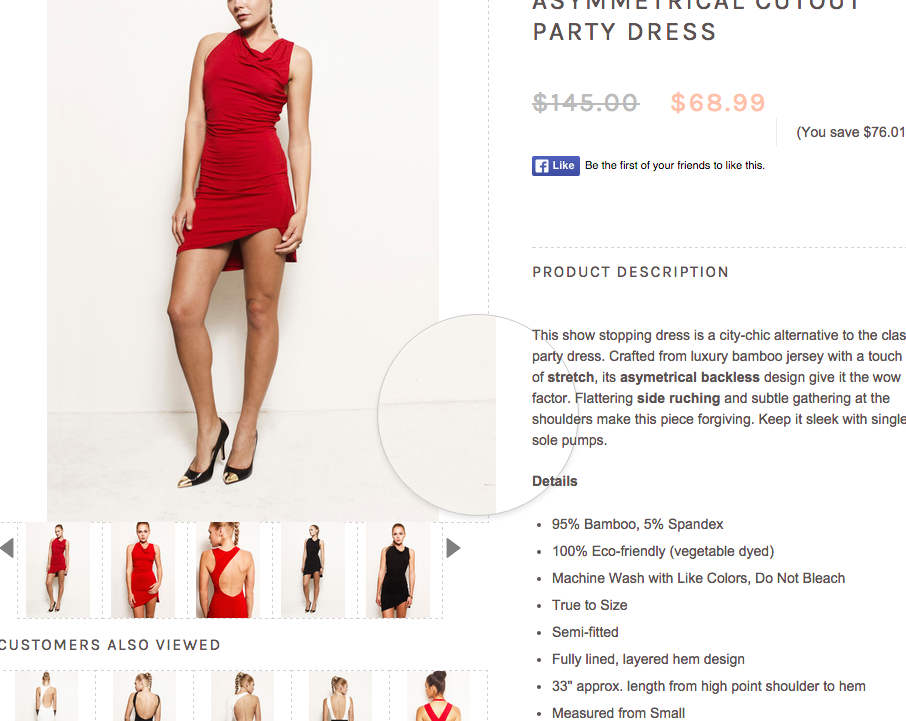4 Secrets To Writing Powerful, Profitable, Product Descriptions

Yes! It’s true. Bland, boring, product descriptions can damage your business.
But if you don’t consider yourself much of a writer it can be tough to know what to say to really showcase your products in their best light, and make them mega appealing to your customer.
In this in article I’m going to share with you four secrets to writing compelling product descriptions that convert browsers into buyers, enhance and improve your SEO, and serve to strengthen your brand message.
I’ll also share with you some examples of product descriptions and give you tips on what worked, what didn’t, and how they could improve it
Tell a Better Story
If your customer is on your sales page and has an interest in what you’re offering, you can take them a step closer to trusting your brand by telling a better story. This can be the inspiration behind the product, how it was made, the many different ways it can be used, etc.
Don’t water down your product descriptions with meaningless phrases like ‘excellent quality’ – this gives customers the “yeah, right, everyone says that” – mentality. Instead, share through your story, what makes your product better quality and why.
Telling a better story is all about encouraging your customers to think visually, appealing to all their senses, and allowing them to create mental scenarios that see them owning your product.
Notes: Both of these descriptions are driven by the story and meaning behind the product. They could have been improved by making them slightly longer and including the keyword 1/2 more times.
But what if you sell a more complex product that requires a lengthy detailed description? Then make sure you make them scannable by including bullet points.
Sell the Benefits as Well as the Features
It’s easy to get hung up on the features. After all, you’ve searched high and low to locate or make the best quality product, and you’re pumped about the features and overall presentation of your product.
But you need to resist the temptation to focus your product descriptions on the features of your products, and here’s why: Your customers won’t buy purely on your products features, as they are more interested in the benefits. They want to know how your product can make their lives easier, more fun, less stressful, or save time – among many other things.
When crafting your product descriptions, take a moment to consider what problem your product solves for your customer. This is the main benefit of your product and should be the primary focus for your product descriptions.
Here’s an example: If you sell bikinis, you sell products that help women look good on the beach and feel more confident about their bodies.
Create Desire
Everything you’ve done up until this stage has been with this goal in mind. Creating desire within your prospect is what moves them from casual browser, to locating their debit cards and making a purchase with you.
In order to stir up desire, think back to your customer profile. What are their likes, dislikes, fears, challenges…what makes them happy? Being able to create that powerful state of desire is linked to your deep knowledge of your customer and what it is they actually want. Don’t be afraid to write passionately and personally.
Notes: Expressive and emotive language that allow potential clients to see the possibilities available to them, are all great tools to stoke desire.
Have a Call to Action
I’m usually asked two things when I advise clients to have a call to action.
1. What is a call to action?
2. Is a product description the right place to have one?
Let’s answer those questions in order.
A call to action, or CTA, lets your reader know what they should do next. They do not have to take this action, of course, but you are gently guiding them to the place where you want them to be and, if you’re selling something they want and will get great value from – where they want to be.
Your buy now button is a call to action of sorts, but adding a call to action directly within your product description can work as a powerful reminder and motivator to get your reader to click your buy now button and make a purchase.
Notes: This description is okay, but it should have lead with the product benefits and included a call to action, especially as each ring is handmade.
Notes: This example does have a a CTA, but that’s about all – the product description is pretty lacklustre for a necklace that costs nearly $1’000
So Now What?
Well it’s time to revisit and rewrite your product descriptions, keeping the above insights in mind. This can seem like a daunting and overwhelming task – especially if you have lot of products – but this simple plan of action will help you take daily action until they are all done.
- Identify and get clear on your primary and secondary keywords for all your products.
- Create a template that will determine the style, tone, and average length of your product descriptions. Try to use your keywords 2/3 times as naturally possible.
- Aim to re-write 10 or more per day until you are done.
So there you have it, four secrets to writing persuasive product descriptions, and a simple 3-step process to help you take action re-writing your own.
Want to learn more about how you can write compelling copy for your product descriptions, email marketing, and social media marketing? Then check this out, you’ll find it a great resource.
What do you struggle with when it comes to writing copy for your products? Let us know in the comments.







How do you put a call to action in the product description in a subtle, not pushy way? You showed bad examples but it would be good to have some good ones too.